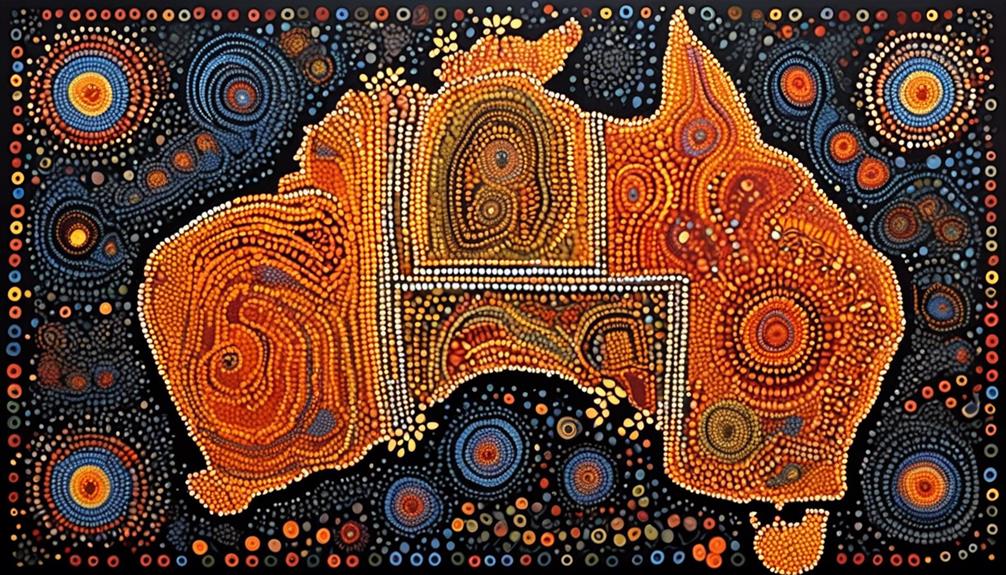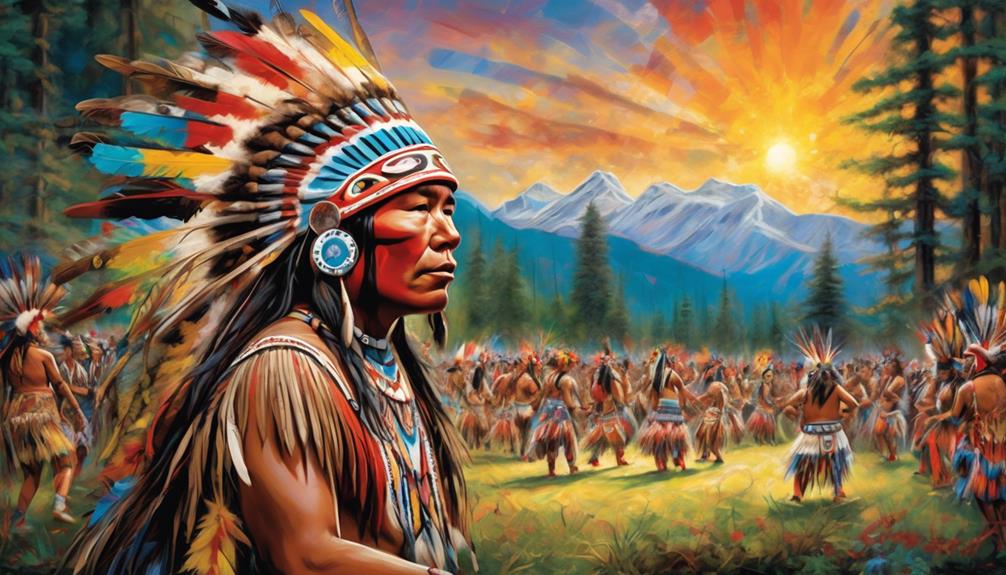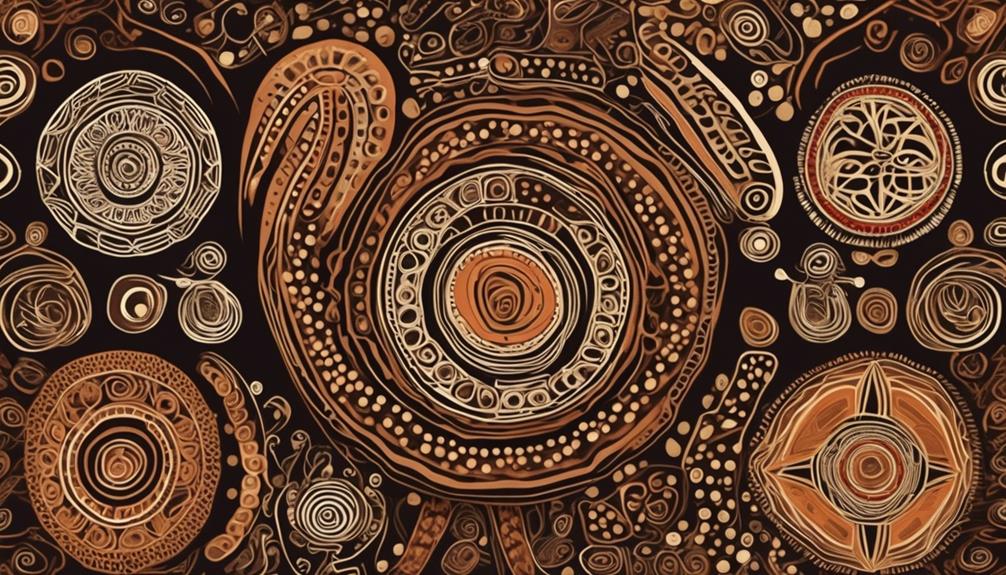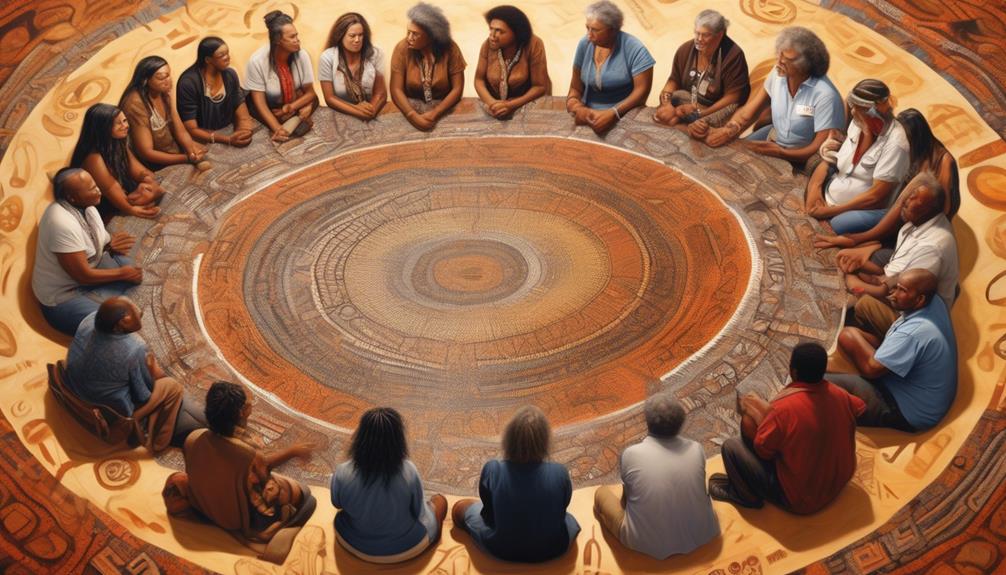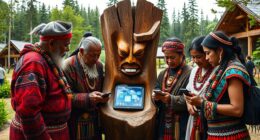Understanding songlines is essential for Australians because these oral stories act as the continent’s ancient GPS, guiding people across vast and challenging landscapes. They connect land, culture, and spirituality, preserving Dreamtime stories that explain origins and traditions. Recognizing their importance helps you appreciate Australia’s rich Indigenous heritage and the deep bond between people and land. To discover how songlines shape identity and navigation, you’ll find there’s much more to explore.
Key Takeaways
- Songlines encode vital navigation routes across Australia’s diverse landscapes, essential for safe and accurate travel.
- Understanding songlines fosters respect for Indigenous culture, history, and spiritual connection to the land.
- They serve as living stories that preserve Dreamtime myths, law, and ancestral knowledge for future generations.
- Recognizing songlines promotes cultural reconciliation and deepens appreciation of Australia’s indigenous heritage.
- Knowing about songlines enhances awareness of land as a sacred, interconnected cultural landscape, not just a resource.
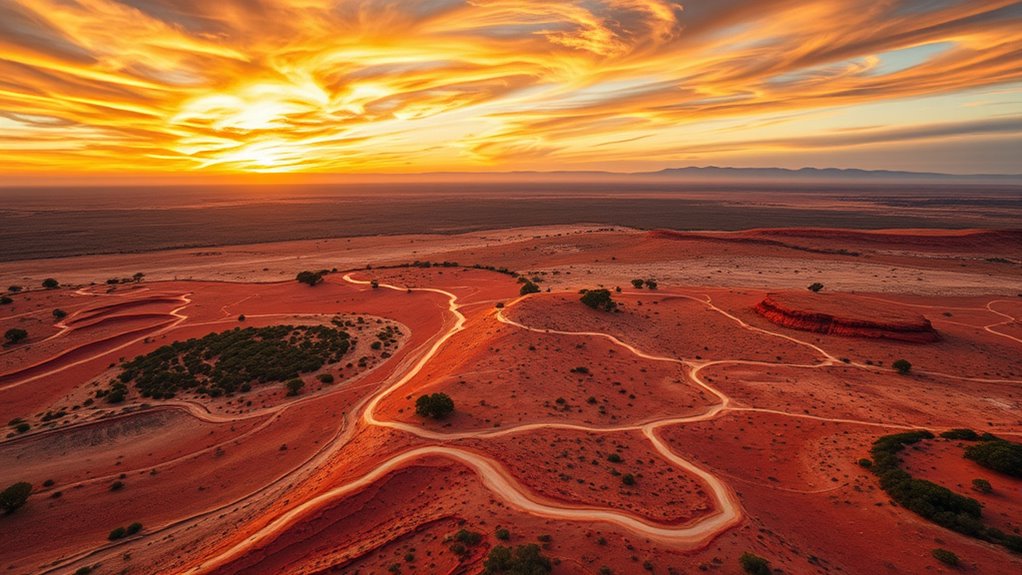
Many Indigenous Australians have used songlines—complex oral maps embedded in songs and stories—to navigate the vast and often challenging landscape of Australia. These songlines are more than just routes; they are living records of Dreamtime stories that connect land, law, and spirituality. As you learn about them, you start to see how deeply intertwined these stories are with the continent’s geography, guiding travelers across deserts, coasts, and forests. Each songline traces a path that links sacred sites, waterholes, and landmarks, ensuring that knowledge is passed down through generations. This oral tradition acts as an ancient GPS, helping people find their way while also preserving cultural significance. Understanding songlines gives you insight into the importance of Dreamtime stories—mythical tales that explain the origins of the land, animals, and humans. These stories are the foundation of Indigenous culture, shaping laws, customs, and moral values. When you appreciate how songlines encode these stories, you realize they serve a dual purpose: navigation and cultural preservation. They keep alive the stories of ancestral beings who shaped the land, ensuring that this knowledge isn’t lost over time. By respecting and learning about these stories, you help support the ongoing effort to preserve Indigenous heritage in a way that honors their spiritual connection to the land. Recognizing the significance of songlines also highlights the importance of cultural transmission and the preservation of oral histories that sustain Indigenous identities. For many Indigenous Australians, songlines are a way of maintaining cultural identity in a rapidly changing world. When you understand their significance, you see that they are much more than old routes; they are living expressions of tradition. They teach respect for the land, reinforce community bonds, and serve as a reminder of the enduring relationship between people and country. Recognizing this makes it clear why every Australian benefits from understanding songlines. They foster a deeper appreciation of Aboriginal history and spirituality, fostering reconciliation and mutual respect across cultures. Learning about songlines also encourages you to see Australia’s landscape as a vast, interconnected tapestry woven with stories and history. They remind you that the land is not just a resource but a sacred heritage, essential to the identity of Indigenous peoples. When you grasp the significance of these oral maps, you contribute to the broader effort of cultural preservation, ensuring that these stories continue to be told and valued. In a country as diverse as Australia, understanding songlines helps bridge cultural gaps and deepen your connection to the land’s true story—one rooted in Dreamtime stories and the timeless wisdom of its first peoples.
Frequently Asked Questions
How Are Songlines Created and Maintained Over Generations?
You see, songlines are created through Aboriginal storytelling, passing down stories of the land, Dreamtime, and ancestors. These stories form ceremonial pathways that guide people across the land, connecting sacred sites and landmarks. Over generations, elders maintain these songlines by singing and sharing them during ceremonies, ensuring the knowledge stays alive. This continuous process helps preserve cultural identity and keeps the land’s spiritual significance intact for future generations.
Can Non-Indigenous Australians Access or Learn About Songlines?
You can access and learn about songlines through cultural exchange and educational programs. For example, participating in Indigenous-led workshops or visiting cultural centers allows non-Indigenous Australians to gain insight into these sacred stories. Though some songlines are protected, respectful engagement helps foster understanding and appreciation. By supporting these initiatives, you can connect with Australia’s rich Indigenous heritage and contribute to preserving and sharing these ancient navigation systems.
What Specific Locations Do Songlines Connect Across Australia?
You’ll find that songlines connect across Australia’s vast landscape, weaving through Dreaming paths and Sacred sites. These routes link locations from the desert interior to coastal regions, guiding Indigenous people through stories, ceremonies, and survival. As you explore, you’ll see how each songline maps out a unique cultural landscape, revealing the deep spiritual connection between the land, its history, and the stories embedded in Sacred sites across the continent.
How Do Songlines Influence Contemporary Australian Culture and Identity?
You see, songlines deeply influence contemporary Australian culture and identity by keeping Indigenous storytelling alive, connecting communities to their land. They serve as a form of cultural preservation, passing down history, laws, and traditions through generations. By understanding songlines, you honor Indigenous heritage, fostering respect and unity. This connection to ancient stories helps shape a shared national identity that celebrates Australia’s rich cultural diversity and history.
Are Songlines Recognized Officially in Australian Land and Water Rights?
You might be surprised to learn that legal recognition of songlines in Australian land rights remains limited. While courts acknowledge Indigenous connections, official land and water rights often focus on native title laws rather than explicitly recognizing songlines as legal entities. This gap highlights ongoing struggles for Indigenous Australians to have their cultural heritage fully acknowledged in legal frameworks, emphasizing the need for greater integration of songlines into land rights discussions.
Conclusion
Understanding songlines isn’t just about respecting tradition—it’s about truly grasping the land’s story. By learning these ancient pathways, you connect with Australia’s heart and history, gaining a perspective that’s deeper than surface-level maps. Think of it as seeing the forest for the trees; you’ll realize that the land’s true navigation isn’t just in coordinates, but in the stories etched in memory. Embrace this wisdom, and you’ll find yourself walking a path richer than you ever imagined.
Mary is a passionate writer who brings creativity and a fresh perspective to our team. Her words have the power to captivate and inspire, making her an essential contributor to our content. Mary’s commitment to storytelling and dedication to promoting Indigenous culture ensures that her work touches the hearts of our readers. We’re fortunate to have her as part of our team.



